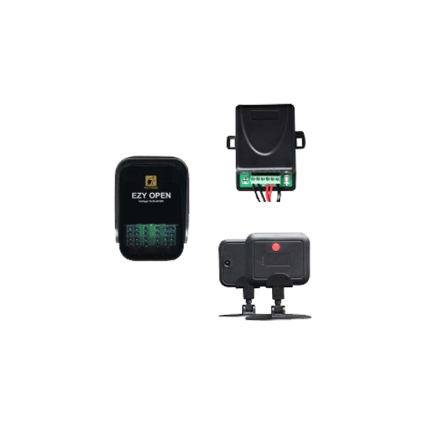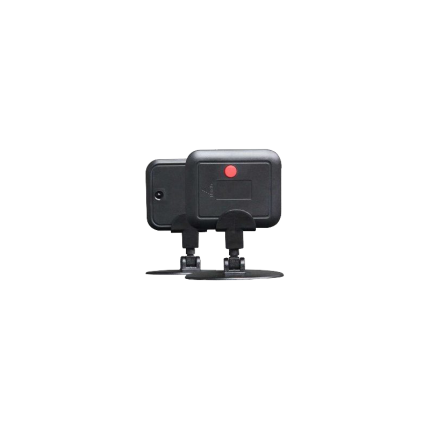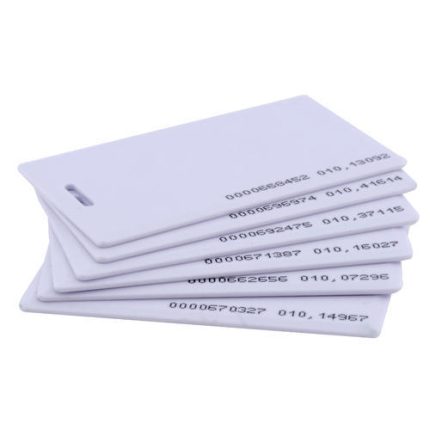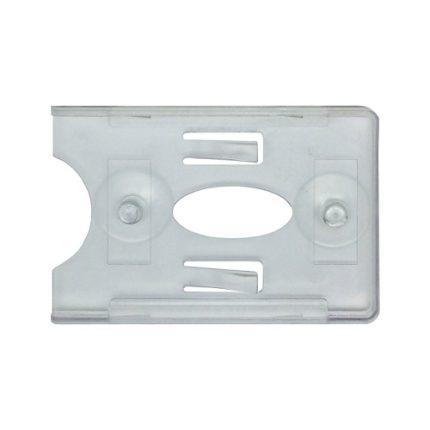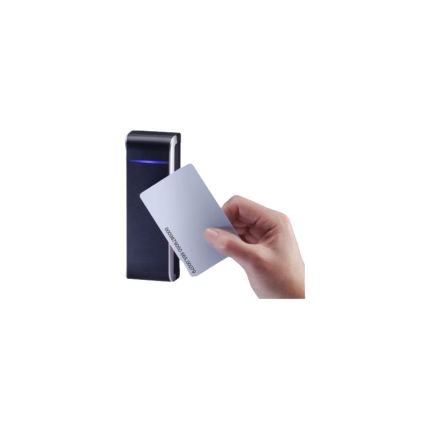card
Gate Opener Infrared Remote
Ship or pick up from our office.
Gate Opener Infrared Remote
An infrared remote for an automatic gate opener allows you to control your gate from a distance, while the infrared sensor provides safety by detecting obstacles and automatically reversing the gate's movement if an obstruction is encountered.Here's a breakdown:
-
Infrared (IR) Remote:This is a standard remote control, similar to those used for televisions, that transmits a signal to the gate opener using infrared light. You press a button on the remote, and it sends a coded signal to the gate opener's receiver, which then activates the gate motor.
-
Infrared (IR) Sensor:This sensor, often found near the gate, emits an infrared beam. If an object (like a person or car) breaks this beam while the gate is closing, the sensor detects the interruption and signals the gate opener to stop and potentially reverse its direction to prevent accidents.
-
Auto-Open/Close Functionality:Many automatic gate openers also have an "auto-close" feature, allowing you to set a timer for the gate to automatically close after a certain period (e.g., 5, 10, or 20 seconds). This adds convenience by eliminating the need to manually close the gate.
-
Remote Range:The range of the remote control can vary, but typical ranges are around 100 feet (30 meters). Some systems can handle a larger number of remote controls (e.g., up to 25).
-
Safety and Security:The infrared sensor adds a layer of safety to your gate system. The automatic reversing feature helps prevent accidents and property damage.
-
Other Features:Some automatic gate openers also include features like:
- Manual release: Allows you to manually open and close the gate in case of power outages or other emergencies.
- Overheating protection: The motor may have a built-in protection mechanism to prevent overheating.
- Multiple control options: Some systems can also be controlled via a wireless keypad or even through a smartphone app.
- Manual release: Allows you to manually open and close the gate in case of power outages or other emergencies.
Infrared Card
Ship or pick up from our office.
Infrared Card
An Infrared Card, also known as an infrared detection card or laser viewing card, is a tool used to visualize infrared light, typically from lasers or other sources, by converting it into a visible light display. It's a simple, low-cost way to check for the presence and position of infrared beams, making it useful for alignment, safety, and diagnostic purposes.
Here's a more detailed explanation:
What it does:
-
Converts invisible IR light to visible light:The card contains a material, often phosphorescent, that absorbs infrared radiation and then emits visible light when stimulated.
-
Indicates presence and location:The illuminated spot on the card shows where the infrared beam is hitting, making it easy to see the beam's path and focal point.
-
Used for various applications:Infrared cards are used for aligning lasers, checking for infrared light leakage, visualizing infrared beams from various sources, and ensuring safety by detecting potentially harmful IR radiation.
UHF Card
Ship or pick up from our office.
UHF Card
UHF (Ultra High Frequency) Card Access Control is a system that uses Ultra High Frequency Radio-Frequency Identification (UHF RFID) technology for managing and controlling access to various areas. Unlike traditional access control systems that require a close proximity tap or swipe, UHF systems leverage the longer read range of UHF RFID to provide hands-free, faster, and more efficient access. How it Works ⚙️ The core components of a UHF Card Access Control system are:- UHF Cards/Tags: These are typically cards, key fobs, or even vehicle tags embedded with a UHF RFID inlay. They contain a unique identification number or other encoded data.
- UHF Readers: These devices emit radio waves in the UHF frequency range (typically 860-960 MHz). When a UHF card/tag enters the reader's range, the tag is powered by the radio waves and transmits its unique data back to the reader.
- Antennas: Integrated within or connected to the readers, these are responsible for transmitting and receiving the radio signals.
- Access Control Software/System: This software receives the data from the reader, verifies the tag's credentials against a database, and then grants or denies access based on predefined rules. If access is granted, it sends a signal to unlock a door, open a gate, etc.
- Tag enters field: A person with a UHF card or a vehicle with a UHF tag approaches the reader.
- Reader transmits signal: The UHF reader continuously emits radio waves.
- Tag responds: The passive UHF tag, powered by the reader's signal, transmits its unique ID back.
- Data received and processed: The reader captures the tag's data and sends it to the access control system.
- Access granted/denied: The system verifies the credentials and, if authorized, activates the access point (e.g., opens a barrier). This entire process happens wirelessly and often within milliseconds.
- Long Read Range: Unlike Low Frequency (LF) and High Frequency (HF) RFID systems, UHF can read tags from several meters away (up to 10-15 meters or more depending on the setup). This allows for hands-free access, such as for vehicles entering a parking lot or individuals walking through a gate without stopping.
- High-Speed Data Transmission and Multiple Tag Reading: UHF readers can read many tags simultaneously and quickly (hundreds of tags per second). This is crucial for high-traffic areas, reducing bottlenecks and improving efficiency.
- Convenience and Efficiency: Users don't need to physically present or swipe a card, leading to a smoother and faster access experience. This is especially beneficial in applications like vehicle access, parking management, and large event entry.
- Enhanced Security: UHF tags are difficult to counterfeit, and the systems often incorporate encryption and password protection to prevent unauthorized access and data manipulation. Real-time tracking capabilities can also enhance security oversight.
- Scalability and Centralized Management: Cloud-based UHF access control platforms allow administrators to manage users, permissions, and access points remotely and in real-time, making it easy to scale for larger organizations or multiple locations.
- Durability and Cost-Effectiveness (Long Term): UHF components are generally robust and durable, leading to lower maintenance and replacement costs over time compared to traditional systems.
- Low Frequency (LF) RFID (125-134 kHz):
- Read Range: Very short (typically a few centimeters).
- Characteristics: Less susceptible to interference from metal and liquids.
- Common Uses: Animal identification, car immobilizers, older access control systems where close proximity is acceptable.
- High Frequency (HF) RFID (13.56 MHz):
- Read Range: Short (up to 1 meter).
- Characteristics: Good for secure data transfer and applications requiring closer interaction. Often used with Near Field Communication (NFC).
- Common Uses: Contactless payments (e.g., Apple Pay, Google Pay), smart cards for building access, public transport ticketing, library systems.
- Ultra High Frequency (UHF) RFID (860-960 MHz):
- Read Range: Long (several meters up to 15+ meters).
- Characteristics: Ideal for long-range, high-speed identification of multiple items. More susceptible to interference from metals and liquids than LF/HF, though specialized tags and antenna designs can mitigate this. The industry standard for passive UHF RFID is often referred to as RAIN RFID.
- Common Uses: Vehicle access control, inventory management, supply chain tracking, asset tracking, automated toll collection, large-scale personnel tracking.
Card Holder
Ship or pick up from our office.
Card Holder
A UHF/RFID card holder is a specialized enclosure designed to hold and protect UHF (Ultra-High Frequency) RFID cards, often used for access control, vehicle identification, and logistics.
These holders typically consist of a durable material with a slot or pocket to securely accommodate the card, and may feature a mounting mechanism like suction cups for windshield attachment.
They enable convenient and reliable use of UHF RFID cards in various applications, such as parking systems, building access, and asset tracking, by providing a designated place for the card and facilitating easy scanning by RFID readers.
RFID Card Access Control
Ship or pick up from our office.
RFID Card Access Control
RFID card access control is a system that uses Radio Frequency Identification (RFID) technology to manage and control access to physical spaces. It provides a secure and convenient way to grant or deny entry to authorized individuals, replacing traditional keys or swipe cards. This system works by wirelessly communicating between an RFID card (or tag) and an RFID reader. How it Works- RFID Card (Tag): Each authorized individual carries an RFID card, key fob, or even a smartphone with an embedded RFID chip. This chip contains a unique identification code and sometimes other encrypted data.
- RFID Reader: Readers are installed at entry points (doors, gates, elevators, etc.). They constantly emit a radio frequency field.
- Communication: When an RFID card enters the reader's field, the card's antenna captures energy from the reader's signal. This energizes the microchip on the card, allowing it to transmit its unique data back to the reader.
- Data Verification: The RFID reader decodes the information from the card and sends it to a central access control server or control panel. This server compares the card's data with a secure database of authorized users and their access permissions.
- Access Grant/Denial: If the credentials match an authorized profile, the system sends a signal to an electronic lock mechanism, allowing entry. If not, access is denied. This entire process typically happens in milliseconds.
- Audit Trail: The system also records detailed access information, including the time, date, and specific access point used, providing a valuable audit trail for security purposes.
- RFID Cards/Tags: These are the credentials held by users, typically in the form of plastic cards, key fobs, or even integrated into mobile devices. They contain a microchip and an antenna.
- RFID Readers (Interrogators): Devices installed at entry points that emit radio waves to communicate with the tags and read their data.
- Access Control Panel/Server: This is the "brain" of the system. It receives data from the readers, verifies user credentials against a database, and controls the electronic locks. It can be cloud-based or local.
- Electronic Locks: Devices that secure the entry points and are controlled by the access control system (e.g., magnetic locks, electric strikes).
- Access Control Software: Software used to manage user profiles, set access levels, monitor events, and generate reports.
- Passive RFID Tags: Most common for access control. They don't have an internal battery and are powered by the electromagnetic field emitted by the reader. They have a shorter read range (a few centimeters to a meter).
- Active RFID Tags: These tags have their own power source (battery), allowing for a much longer read range (up to several hundred meters) and the ability to broadcast signals periodically. They are typically more expensive.
- Semi-Passive RFID Tags: These tags have a battery to power the chip but only transmit data when activated by a reader's signal, offering improved sensitivity and performance over passive tags.
- Convenience: Offers contactless and keyless entry, making it fast and easy for users to gain access. Cards can often be read from inside a wallet or bag.
- Enhanced Security: Provides unique identification and can utilize encrypted communication, making tags difficult to duplicate. Lost cards can be immediately deactivated, preventing unauthorized use.
- Efficiency: Streamlines entry and exit processes, reducing wait times, especially in high-traffic areas.
- Flexibility & Scalability: Easily allows for adjusting access permissions for different users, areas, or time frames. Systems can be expanded or modified as needs change.
- Integration: Can be integrated with other security systems like CCTV, alarms, and time attendance systems for comprehensive security management.
- Audit Trails: Provides real-time tracking of who enters and exits, offering valuable data for security monitoring and incident investigation.
- Durability: RFID components generally experience less wear and tear compared to traditional mechanical locks or swipe card systems.
- Skimming: In theory, unauthorized readers could attempt to read card information if they get close enough, though modern RFID cards often use one-time codes and encryption to mitigate this risk.
- Cloning: If the security protocols are weak, an RFID card's information could potentially be cloned.
- Electromagnetic Interference: Other electronic devices or metal/liquid objects can sometimes interfere with RFID signals, impacting performance.

